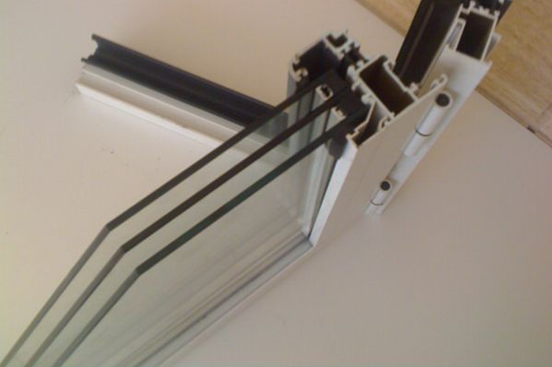In the wake of green building promotion in China, the effect of energy-saving glass starts to emerge. Among the different types of energy-saving glass, triple-pane Low-E insulating glass has been a popular option for green buildings. Triple-pane Low-E insulating glass, also known as infrared shielding glass, is currently the top-rated energy-saving product among Low-E coated glass available. It is made of glass with silver metallic coatings on the inner surfaces. So, as a new player in this category, what advantages does the vacuum insulated glass have over the triple-pane glass?
I. Comparison of Structures
1. Triple-pane Insulating Glass
The triple-pane insulating glass is composed of three glass plates with edges sealed with high strength airtight composite binder to bond together three glass plates and sealing strips, creating an envelope filled with dry gas. Desiccant materials are placed in the window sash before the frame is attached via glue, welding, or fusion methods. Insulating glass can be constructed with 3, 4, 5, 6, 8, 10 or 12mm thick glass panes and 6, 9 or 12mm airspace.

2.Vacuum Insulated Glass
Vacuum insulated glass is a new generation of energy-saving glass made of two glass panes with sealed edges. The vent hole will also be sealed after the air is evacuated from the envelope, leaving 0.1-0.2mm gap between the panes separated by small spaces.

II. Comparison of thermal transmittance (U-value)
U-value is the overall heat transfer coefficient that describes how well a building element conducts heat or the rate of transfer of heat (in watts) through one square meter of a structure divided by the difference in temperature across the structure. The elements are commonly assemblies of many layers of components such as those that makeup walls/floors/roofs etc. The units of measurement are W/m²K. The lower the U-value is, the better the heat loss reduction effect will be. As shown in the figure, the U-value of vacuum insulated glass is significantly lower than that of triple-pane insulating glass.

III. Comparison of Noise Reduction Performance
The noise reduction rate of triple-pane insulating glass is similar to the value of Low-E insulating glass, with only 2~3dB difference. While triple-pane insulating glass has a weighted sound reduction index around 29db, the rate of a single piece of vacuum insulated glass can reach as high as 37~42db.
IV. Comparison of Weight
The weight of the triple-pane insulating glass is usually 1.5 times heavier than vacuum insulated glass. Through time, the load will take its toll on the functionality of the triple-pane window. To ensure a good performance, the cost will rise.
V. Comparison of Applications in Passive Building
In general, passive buildings can choose from two types of glass: Vacuum insulated glass and triple-pane insulating glass. Compared to triple-pane insulating glass, vacuum insulated glass with single piece of Low-E glass has a much lower U-value. In addition, triple-pane insulating glass has an intrinsic weakness in three areas:
1. The visible light transmittance is significantly reduced, allowing less daylight into the building;
2. The windows and doors are often thicker and heavier, inconvenient for daily operation;
3. With the highest configuration, its U-value still can hardly match the U-value of vacuum insulated glass.





